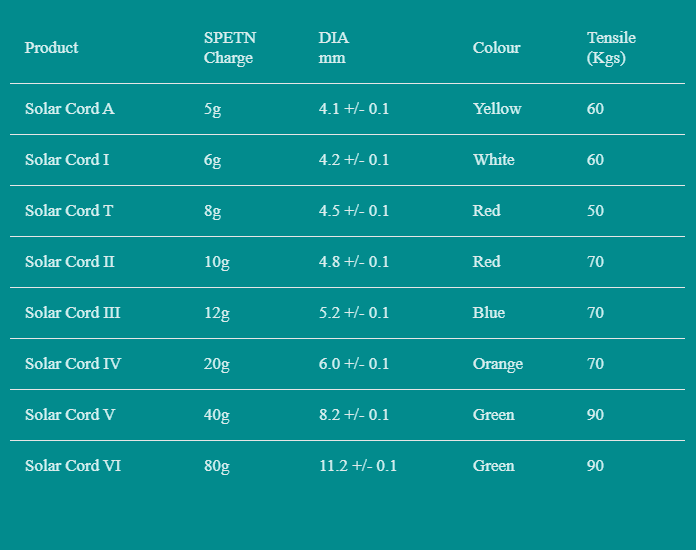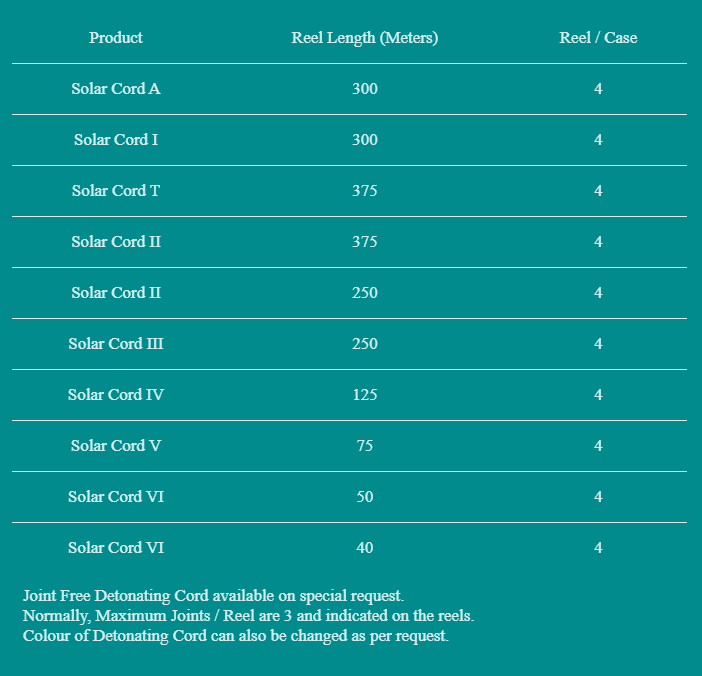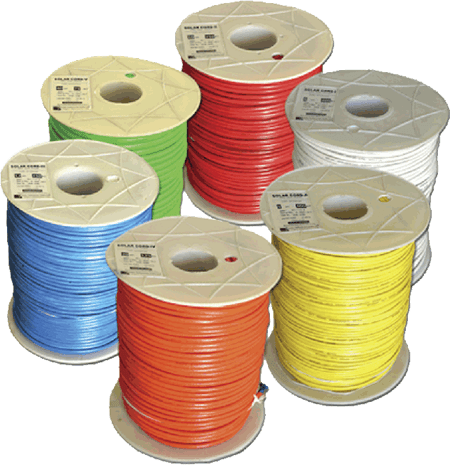DESCRIPTION & APPLICATION
Solar Cord comprises an explosive core of PETN encapsulated in a tape winded with a natural or synthetic fibres and finally coated with plastic which makes the product strong, flexible and waterproof. It provides quick, safe and convenient means of simultaneously initiating any number of independent or inter-related charges.
Solar Cord is available with a variety of PETN charge weights designed for different applications.
Solar Cord can be initiated by a No. 6 or No. 8 plain detonator, electric or nonelectric detonator.
Solar Cord with PETN core loads of 10 g/m is most frequently used as downlines in blast-holes either for directly initiating charges or detonator sensitive NG explosives, watergels and emulsions or indirectly initiating columns and decks of detonator insensitive ANFO and non-cap sensitive watergels and emulsions by means of special primers or boosters.
- Solar Cord is a high explosive that must be handled with care and respect at all times. Except for a direct lightning strike, SOLAR CORD detonating cord is unaffected by stray currents generated by electrical storms, power lines and radio/radar transmitters which make electric firing comparatively hazardous. Intense impact or friction can initiate SOLAR CORD, but is insensitive to initiation during normal handling.
- Solar Cord can detonate if subjected to extremely high temperature, but remains stable and safe to use below 70°C. For temperatures between 70°C and 80°C exposure time should not exceed 24 hours.
- Solar Cord is an explosives and should therefore be stored in magazines and transported/handled with appropriate care and respect.
TECHNICAL PROPERTIES

Note:
Velocity of Detonation 6500 – 7500 Mtr / Sec Initiation by No. 6 Detonator.
RECOMMENDATIONS FOR USE
Solar Cord downlines must be continuous lengths of cord and must never incorporate knots splices inside a blasthole.
Solar Cord should be cut using either an anvil type tool or a sharp knife. Cutting devices, which have a shearing action (e.g. scissors), must not be used to cut detonating cords.
Solar Cord can be attached to a cartridge of high explosives by simply tying the cord securely around the cartridge. When using SOLARCAST Primers.
Solar Cord is threaded through the hole provided permitting a simple, secure way of attachment.
A strand of most Solar Cord can be initiated by the detonation of an adjacent strand having a PETN core load of 5 gm/m or greater, provided that the two strands are effectively connected by a suitable knot.
When connecting Detonating Cord lines, pull all knots up tightly so that the two lines are in positive contact, and trim the tail ends of the knots off short to prevent them from crossing the trunklines or downlines and causing cut-offs. Keep each connection at right angle as possible to prevent possible cut-off failure that can occur where the downline makes an acute angle back towards the point of initiation of the trunkline. Trunklines can be initiated by an Electric Detonator, a Non Electric Detonator or by a plain detonator crimped with safety fuse. The base end of the detonator is taped to the cord must point in the direction that the detonating cord is required to detonate.
PACKAGING

TECHNICAL DATA
STORAGE
Store SOLAR CORD in a suitably licensed magazine for Class 1.1D Explosives.
SHIPPING INFORMATION :
Authorised Name of Explosive : Solar Cord
Proper Shipping Name : CORD DETONATING, FLEXIBLE
Class / Div. : 1.1D
UN No. : 0065
All regulations pertaining to the handling and Use of such explosives should apply.


